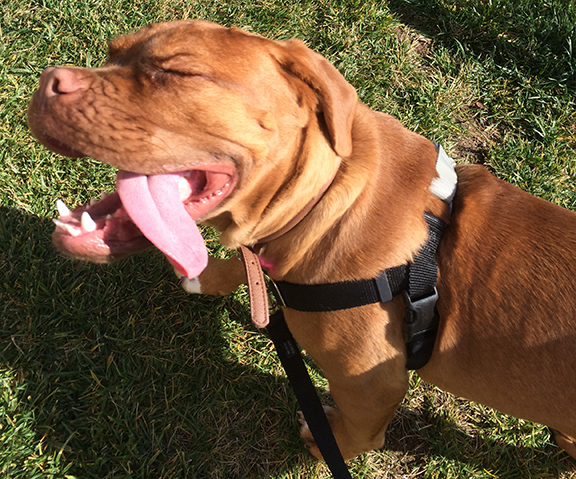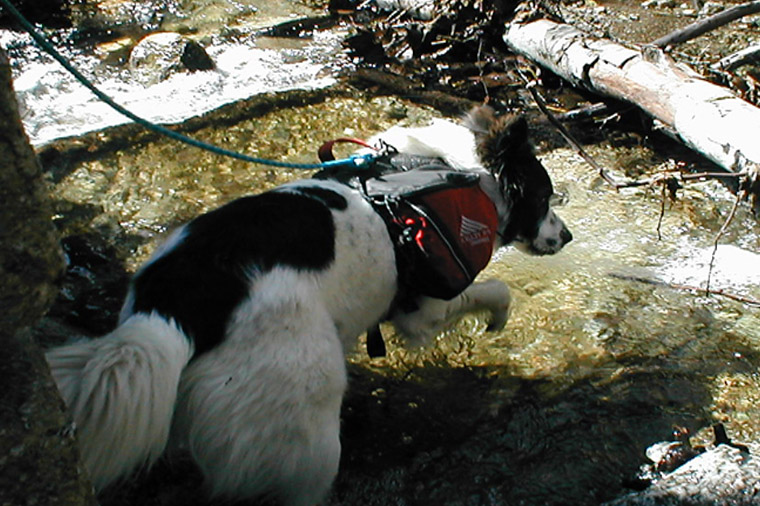
My dogs, like myself, seem to be klutzes. This morning while Rox was rolling around on the floor she somehow got a piece of thread wrapped around one of her teeth, a maneuver I’m still trying to figure out. As she’s semi-freaking out and pawing at her mouth I say “let me help” coupled with the hand signal for “come”, she stopped pawing, and walked over to me allowing me to remove the thread.
“Let me help,” means a a series of commands: stop what you’re doing (pawing at your mouth,) wait or come depending on the situation and “I’m going to be touching you and removing or fixing whatever the problem is.” “Let me help” is taught first with a “wait” in one long command “Wait let me help.” This is useful when the dog is running, pulls up and is suddenly lifting a paw. Here that usually means a little thorn or something in the paw and you don’t want the dog to continue to walk on it. Since “let me help” generally means “wait,” if I’m in a position to call the dog to me I add the “come” hand signal.
What I really like about “let me help” is the dog learns that you can fix things. After awhile the dog will come to you or freeze and look at you if there is a problem. This is part of the process of learning to read your dog and your dog developing a deep trust in you. It takes time, but the rewards are incredible.
Since you certainly don’t want to injure or stress your dog in order to teach “let me help,” this can only be opportunistic training, meaning you can only work on it when there is a problem, but if you broaden your definition of “problem,” you will have more opportunities than you think. Even if the dog can remove or solve the problem themselves you can use the opportunity to teach “let me help.”
Anything caught on the dog, such as a twig or leaf in the fur is a great opportunity. The dog will generally stop what they are doing and attempt to remove the offending item. If you’ve already taught “wait,” this makes the process easier. “Wait, let me help,” and walk over to the dog and remove the twig or leaf then “good dog!” or give a treat if you have one. Even if the dog has removed the item by the time you’ve reached them, check them out and look and touch at where the item was. “Good dog!”
There are a few rules to teaching “let me help.” First, if the item is stuck in the fur on the legs you want the dog to “wait” and not “come.” If it’s a real injury you want the dog to freeze and lift up the bad leg, not go down, which means you’d have to figure out which leg has the problem. This saves time. If it’s a real problem and the dog voluntarily starts coming toward you limping, use “wait” alone.
The second rule is know if your dog has issues with being touched on certain parts of their body. Pais hated people messing with her feet, but teaching “shake” and “paw” has solved that problem. Work on touching resistant areas often. Evening cuddles are a great time to touch everything in fleeting pets. You should be handling feet, ears, mouth and lifting the lips, hips and tummy, all with soothing, long strokes.
Teaching “let me help,” can take quite a long time depending on how often your dog gets into stuff (here that’s a lot!) but it’s well worth the time to teach your dog to give you clear signals that there’s a problem.




